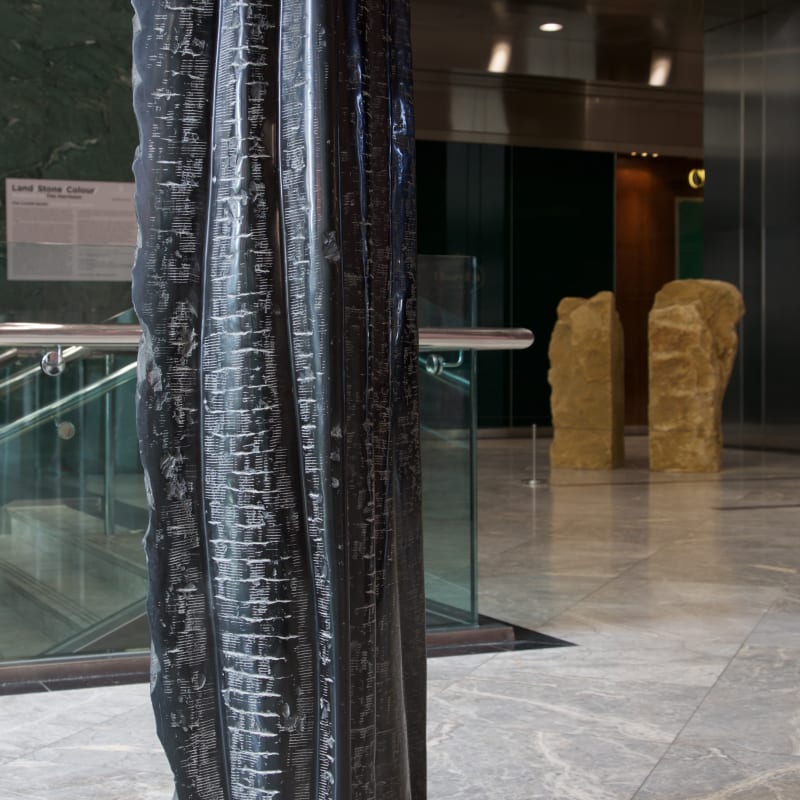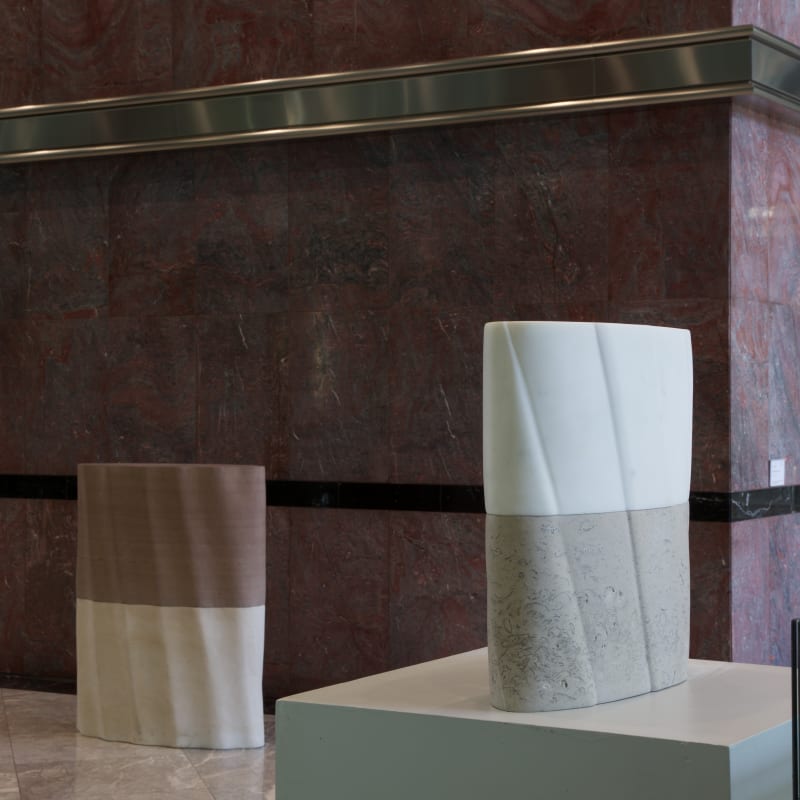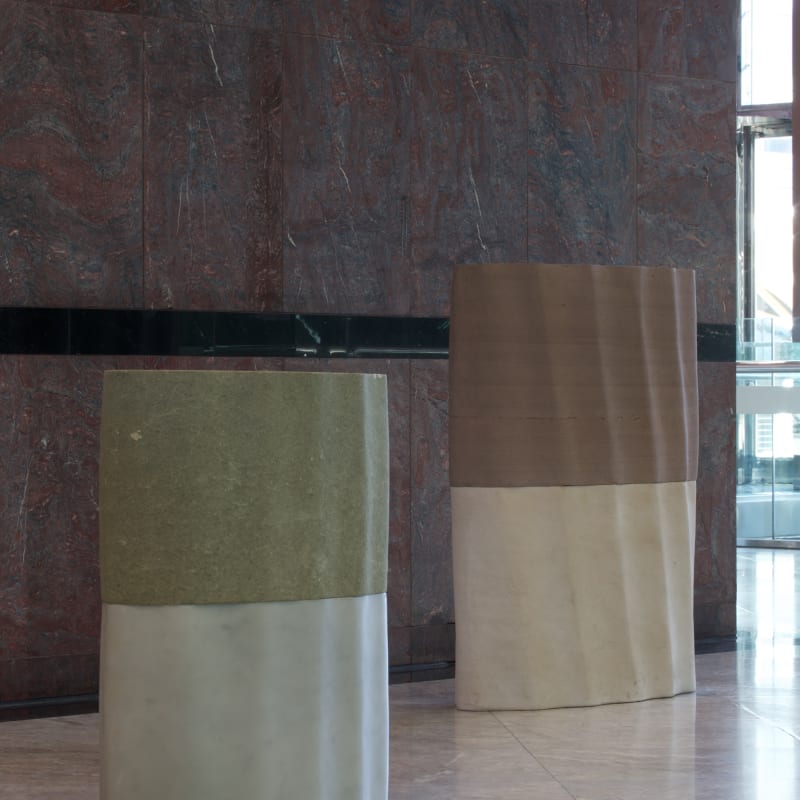Landscape and stone, with the range of colours they reveal, are both subject and substance of Tim Harrisson's sculpture. His approach to working with stone is minimal, his carving restrained. His intervention is just enough to draw out its materiality within the most subtle shape or form. In his work he plays on the qualities of stone, which he uses singly or in partnership with another stone of differing colour, texture or origin.
His carvings in this exhibition are in a range of English limestone, sandstone and Carrara marble. In some sculptures, the Carrara marble came from the studio of the late Dame Barbara Hepworth (1903-75), a gift from the Trustees of the Hepworth Estate. This presented a great opportunity for Harrisson to assess what he was doing, but gave him the burden of responsibility to use it well, within his own terms. Some of the 'Hepworth' sculptures remain in the block she had chosen, carved by Harrisson in low relief across the vertical surfaces of the cuboid form. Others are paired with limestone or sandstone and carved in unison.
The tempo of this exhibition is purposefully slow, in tune with the way Harrisson carves, carefully and with thoughtful consideration for the stone, its scale and texture. The larger works are made from stones chosen for their texture and colour - black, gold, green, pink, white - and for the opportunities they offer for differing ways of carving: for example the black carboniferous limestone used in Root (2006) is polished to a dark sheen and 'bruised' with a tool to create near-white markings across its surface. Named for their places of origin, English limestone and sandstone evoke the landscape: Chicksgrove, Purbeck, St Bees, Portland, and finally Ham stone, used by Harrisson in End Piece (2015), made especially for this exhibition. Its rugged volume reflects the way in which it was cleaved from the quarry in one piece. The stone is of a loose texture with inclusions of clay to emphasize the layering of this sedimentary rock. His decision in sculptural terms was to slice the rock along a horizontal seam and turn both halves vertically. It is a bold piece that results from much thought and precise though minimal manipulation of his cherished material: stone.
– Ann Elliott
All photos © Heini Schneebeli / Bridgeman Images




